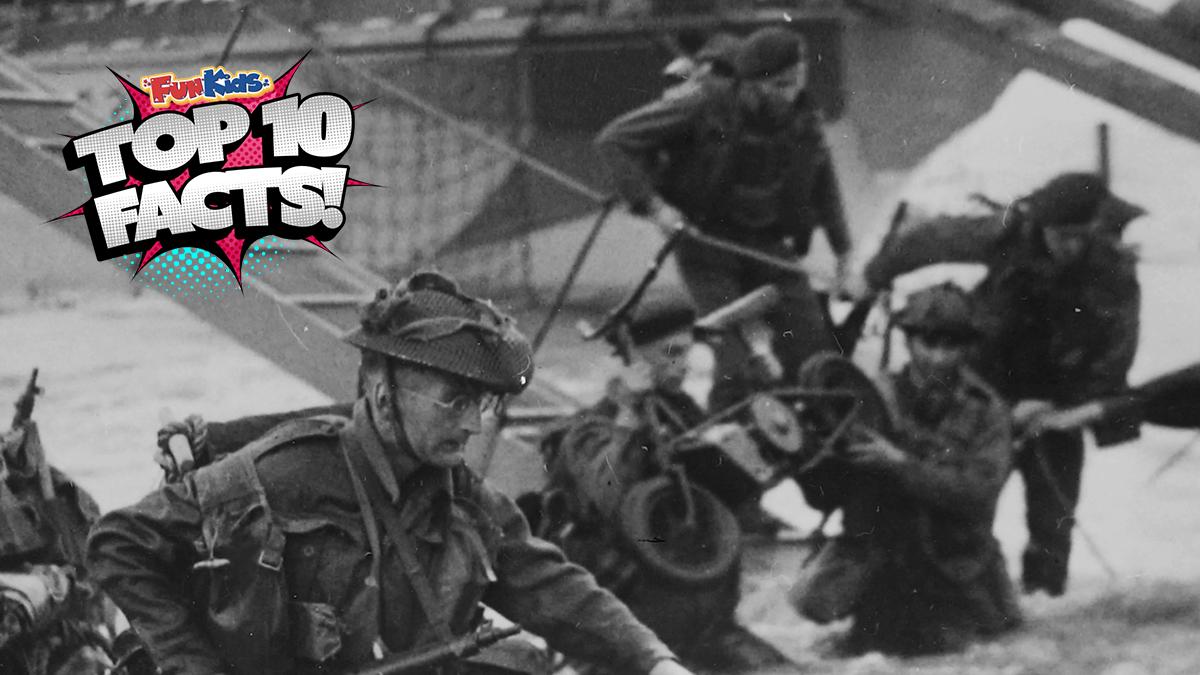D-Day, which took place on 6th June 1944, was one of the most significant events of World War II. It marked the beginning of the end for Nazi Germany as Allied forces launched a massive invasion on the beaches of Normandy, France. It involved meticulous planning, immense bravery and incredible coordination amongst the Allied nations.
To understand the importance and impact of this historic day, here are Top 10 Facts…
1. D-Day was a military operation during World War ll.
It happened on 6th June 1944, when Allied forces from many countries, including the United States, Britain and Canada, landed on the beaches of Normandy on the North French coast, to fight against Nazi Germany. This event was a turning point in the war and helped lead to the defeat of the Nazis.
Why is it called ‘D-Day’? When military operations were planned, their actual date and time is not always known. The term ‘D-Day’ was therefore used to mean the date on which operations would begin – whatever date that was. The day before D-Day was known as ‘D-1’, while the day was ‘D+1’, and so on. This meant that if the date changed all other dates in the plan did not have to be corrected
2. D-Day had the largest armada ever.
D-Day had the largest armada (that’s a fleet of ships) ever assembled.
6,939 vessels were involved, which included 1,213 naval combat ships, 4,126 landing ships and landing craft, 736 ancillary craft and 864 merchant vessels.
These ships carried soldiers, tanks, and supplies across the English Channel to the beaches of Normandy.
This massive fleet was essential for the success of the operation, and the ships came from all across the UK.
3. Special boats called landing craft were used to bring soldiers to the beaches.
These landing craft could carry troops and vehicles right up to the shore.
They were designed to handle rough seas and could open at the front to allow soldiers to rush out and start fighting as soon as they hit the beach.
LCT 7074 is the last surviving Landing Craft Tank from D-Day and you can see it at Portsmouth.
4. 156,000 soldiers landed in Normandy on D-Day.
This was the largest number of troops ever moved across the sea in one day. They arrived by sea and air, landing on five beachheads in Normandy, France.
These soldiers came from various Allied nations and were crucial for establishing a foothold in France.
By the end of 11th June 1944 (D+5), an amazing 326,547 troops, 54,186 vehicles and 104,428 tons of supplies had been landed on the beaches!
5. Mulberry harbours were built to help supply the troops.
The Allied forces needed a way to quickly and safely get supplies to their soldiers fighting in Europe after landing on the beaches of Normandy.
They built Mulberry harbours, which were portable, temporary harbours made of large concrete and steel pieces.
These pieces were floated across the English Channel and assembled near the beaches, creating docks where ships could unload supplies.
This innovative solution ensured the soldiers had the food, weapons, and medicine they needed to continue their fight.
6. The Allies kept the invasion plan a secret.
They used tricks like fake radio messages and dummy equipment to fool the Nazis into thinking the attack would happen somewhere else.
This helped ensure the element of surprise, which was crucial for the invasion’s success.
7. The D-Day landings took place on five beaches.
These beaches were code-named Utah, Omaha, Gold, Juno, and Sword.
Each beach was assigned to different Allied forces.
For example, American troops landed on Utah and Omaha, while British troops landed on Gold and Sword, and Canadian troops landed on Juno.
8. Paratroopers were dropped behind enemy lines before the beach landings.
Thousands of paratroopers were dropped from planes in the early hours of D-Day to capture key positions and disrupt German defenses.
Their bravery helped pave the way for the main invasion force.
9. D-Day was a team effort by many countries.
The majority of troops who landed on the D-Day beaches were from the UK, Canada and the US.
However, troops from many other countries participated in D-Day – including Australia, Belgium, Czechoslovakia, Denmark, France, Greece, the Netherlands, New Zealand, Norway and Poland.
Their combined efforts and cooperation were vital to the success of the mission.
Find out more about D-Day and the role played by all these countries through these Resources published by the British Council
10. The oldest surviving British veteran is Don Sheppard who is 104!
He is one of the few surviving Normandy veterans in the world.
At just 24 years old, he participated in D-Day with the Royal Engineers.
He landed on Juno Beach in Normandy in June, 1944.
Add a commentTop 10 Facts
From the Tudors to rocks to fish, we have all the best facts right here!
More From Top 10 Facts



